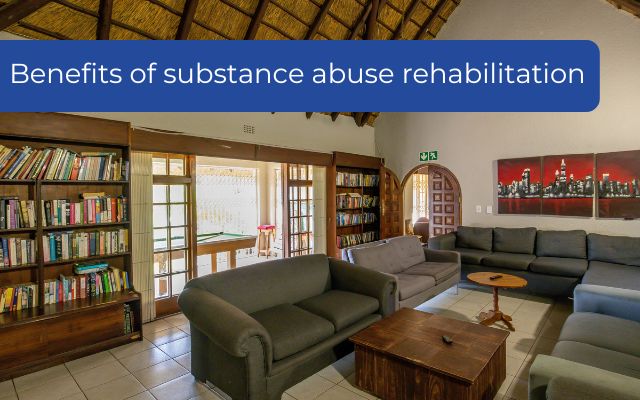Narconon Africa Fundamentals Explained
Table of ContentsThe 3-Minute Rule for Narconon AfricaExcitement About Narconon AfricaThe Facts About Narconon Africa UncoveredNot known Facts About Narconon AfricaThe Definitive Guide for Narconon AfricaThe Ultimate Guide To Narconon AfricaThe Definitive Guide for Narconon Africa
In a series of documents with Manudeep Bhuller and Katrine V. Lken, we get rid of these information obstacles and the nonrandomness of imprisonment, supplying new understandings right into exactly how imprisonment influences recidivism, work, youngsters, and criminal networks - Drug addiction help. Figure 1 Our job research studies the effects of incarceration in Norway, a setting with two vital benefitsWe can better link this info to various other family participants, consisting of kids and brother or sisters. We have information on co-offending that permits us to map out criminal networks for observed criminal offenses. Second, we can utilize the random project of criminal cases to judges that vary in their tendencies to send offenders to jail.
Some courts send out offenders to jail at a high price, while others are more tolerant. We measure a judge's stringency as the average imprisonment rate for all various other instances a judge deals with, after managing for court and year fixed effects, which is the degree of random task. This quasi-random assignment of court stringency can be made use of as a tool for imprisonment, as it strongly forecasts the court's decision in the current case, but is uncorrelated with other situation characteristics both deliberately and empirically.
Some Known Questions About Narconon Africa.
Attributes of prisoners, consisting of demographics and criminal offense groups, are broadly similar in Norway and various other nations, including the United States, with the exceptions that the US murder rate is much higher, and race plays a larger function there. What attracts attention as various, specifically compared to the USA, is the prison system.
Figure 2In Norway, the typical time invested behind bars is a little over 6 months, which resembles most other Western European nations. This contrasts with ordinary United States prison time of almost 3 years, which remains in huge part the factor the United States is an outlier in its incarceration rate compared to the remainder of the globe [Number 1]
How Narconon Africa can Save You Time, Stress, and Money.
This supplies much even more splitting up in between minor and hard offenders than exists in the USA. There is no congestion in Norwegian jails and much better personal safety, with each detainee being designated to their own cell and a higher inmate-to-staff ratio than in the United States (https://narcononafrica.bandcamp.com/album/narconon-africa). Prisons in Norway likewise offer well-funded education, medicine treatment, mental health, and work training programs
Our study on the impacts of incarceration on the offender, using the arbitrary assignment of judges as an instrument, yields 3 vital findings. First, jail time discourages even more criminal behavior. We locate that imprisonment lowers the probability that an individual will reoffend within five years by 27 percent factors and minimizes the equivalent number of criminal costs per person by 10 costs.
Narconon Africa for Dummies
We discover sizable decreases in reoffending likelihoods and cumulative charged crimes also after defendants are launched from jail. Our second result is that bias because of option on unobservable specific characteristics, if ignored, leads to the erroneous final thought that time invested behind bars is criminogenic. If we simply contrast criminal defendants sentenced versus those not sentenced, we find favorable associations between incarceration and succeeding criminal activity.
This stands in contrast to our evaluation based upon the random task of courts, which finds an opposite-signed outcome. Third, the decrease in crime is driven by people that were not working before incarceration. Among these individuals, imprisonment increases involvement in programs directed at improving employability and reducing regression, and this inevitably increases work and earnings while preventing criminal behavior.

Jail time creates a 34 percent point rise in participation in job training programs for the previously nonemployed, and within 5 years their employment rate boosts by 40 percent factors. At the very same time, the probability of reoffending within five years is cut by 46 portion factors, and there is a decline of 22 in the typical variety of criminal costs.
About Narconon Africa

A possible description for the distinction is that Norway's jail system differs substantially, both in terms of prison-term length and prison conditions, from the United States prison system. While comprehending the results of imprisonment on the wrongdoer is an important primary step, recording spillover effects is likewise important for assessing criminal justice policy and designing efficient prison systems.
Getting My Narconon Africa To Work

Average least squares approximates expose that kids of incarcerated fathers are 1 percent factor more probable to be billed with a crime, relative to a mean of 13 percent, and reveal no result on school qualities. Utilizing our judge stringency tool, we discover no analytical proof that a daddy's imprisonment impacts a child's own criminal offense or school qualities, however we are unable to dismiss modest-sized results.
Indicators on Narconon Africa You Should Know
We define criminal groups based upon network web links to previous criminal situations. Our evaluation returns 3 primary findings. Initially, when a criminal network member is incarcerated, their peers' chance of being billed with a future criminal offense reduces by 51 percentage points over the following 4 years. Furthermore, having an older sibling jailed reduces the probability his younger sibling will certainly be billed with a crime by 32 percent Visit Website factors over the next 4 years.